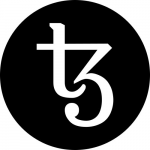
Overview: Proof-of-Stake (PoS) is widely considered the future of cryptocurrencies, as Proof-of-Stake has been overtaking Proof-of-Work as a preferred consensus mechanism. PoS is generally more scalable, with lower transaction fees, and better energy efficiency.
Apart from its many benefits, PoS coins also allow investors to earn “interest” income — sometimes called “yield” — through a process called staking. In this article, we will look at the basics of staking and highlight the best staking coins you may want to add to your crypto portfolio.
[Looking for the best crypto staking yields right now, you can find that on our Best Staking Rates page.]
| Digital Asset | APY | APR | Market Cap | Staking Ratio | 1-year ROI (Jan 2021 – Dec 2021) | 1-year ROI (Dec 2021 – Dec 2022) |
| Ethereum | 4.97% | 5.11% | $139.1 billion | 13.05% | 420% | -75% |
| Cardano | 3.49% | -0.15% | %11.0 billion | 71.39% | 2,723% | -80% |
| Avalanche | 8.25% | 2.55% | $3.6 billion | 62.64% | 867% | -90% |
| Solana | 6.51% | 1.47% | $4.4 billion | 68.54% | 4,202% | -94% |
| Polkadot | 14.19% | 6.33% | $6.2 billion | 48.96% | 92% | -86% |
| Polygon | 5.63% | 3.18% | $7.1 billion | 36.79% | 15,275% | -52% |
| Algorand | 7.13% | 3.25% | $1.8 billion | 52.76% | 4,560% | -88% |
| Binance | 4.06% | 4.1% | $43.2 billion | 83.9% | 1,335% | -57% |
| Tezos | 3.81% | 3.8% | $898 million | 75.46% | 100% | -82% |
| Cosmos | 19.25 | 5.98% | %2.7 billion | 64.6% | 500% | -66% |
| Near | 9.78% | 9.75% | $1.3 billion | 42.34% | 1,300% | -93% |
 Ethereum (ETH)
Ethereum (ETH)
APY: 4.97%
Market Cap: $139.06 billion
Staking ratio: 13.05%
1-Year ROI: 420% (Dec 2021), -75% (Dec 2022)
In our view, Ethereum is the blockchain project with the best long-term prospects. With its rich ecosystem of smart contracts, DeFi apps, and developers, it has the potential to dethrone bitcoin and become the world’s most valuable cryptocurrency.
Ethereum’s transition from a Proof-of-Work token to a Proof-of-Stake model in 2022 attracted the attention of investors who have pumped in $18 billion worth of tokens into the ETH2 staking after the merge was successful.
The requirements for solo staking are quite high – starting at a minimum of 32 ETH. Thankfully, individual investors on a lower budget can look at ETH staking pools. Like many other crypto investments, Ethereum enjoyed a strong bull run in 2021, with a projected annual ROI of over 420%.
While ETH has suffered from the subsequent bear market in 2022, it remains one of our top options for long-term staking due to the overall health of the blockchain and its projected growth rate.
Pros:
- Future growth potential
- Token/blockchain with high utility
- Staking pools are easily available
Cons:
- Token has an unlimited supply
- Solo staking is difficult and expensive
 Cardano (ADA)
Cardano (ADA)
APY: 3.49%
Market Cap: $11 billion
Staking ratio: 71.39%
1-Year ROI: 2723% (Dec 2021), -80% (Dec 2022)
Cardano was one of the original PoS tokens in the industry. At a time when Ethereum was struggling with high gas fees and scalability issues, Cardano held the title of “Ethereum killer” alongside other altcoins like Solana.
Although it made major gains in 2021, Cardano has been caught in a bearish grip for quite a while now. Although it is an innovative blockchain with smart contracts and new features, it has struggled to beat Ethereum’s adoption or ecosystem.
On the plus side, Cardano is still a vibrant project with a heavy focus on sustainability. It also has a very loyal community, and a strong development team. ADA is not a bad option for long-term staking.
Pros
- Innovative and feature-rich blockchain with constant updates
- Token available at a low price point
- Has the potential to grow
- Huge focus on sustainability
Cons
- Could face a sustained bear market
- Faces competition from Ethereum and other PoS blockchains
 Avalanche (AVAX)
Avalanche (AVAX)
APY: 8.25%
Market Cap: $3.6 billion
Staking ratio: 62.4%
1-Year ROI: 865% (Dec 2021), -90% (Dec 2022)
Another contender for the title of “Ethereum killer,” Avalanche rose to prominence with the claim of being the fastest blockchain network in the world. It used a native protocol called Snow, as well as sub-networks to achieve high transaction speeds and low latency while retaining scalability.
In 2021, its AVAX native token was in the top ten list of crypto assets by market capitalization. The coin is a favored option for staking due to its finite supply, which has the potential to increase prices.
Although it has fallen heavily in 2022, AVAX could still prove to be an excellent long-term investment. The blockchain is heavily backed and has partnerships with mainstream firms like Deloitte.
Pros
- Has a finite supply of 720 million tokens
- Popular project with mainstream visibility
- Partnerships with Mastercard and Deloitte
Cons
- Token price has fallen sharply in 2022
- Was linked to the Terra-Luna project
 Solana (SOL)
Solana (SOL)
APY: 6.51%
Market Cap: $4.4 billion
Staking ratio: 68.54%
1-Year ROI: 4202% (Dec 2021), -94% (Dec 2022)
Perhaps a closer rival to AVAX and Cardano, Solana is a PoS blockchain with a heavy focus on scalability. One of the fastest blockchains in the world, this Ethereum competitor also boasts extremely low gas fees.
The Solana ecosystem is also quite robust and diverse, with DeFi projects, Web3 apps, NFTs, and more. The SOL token enjoyed a wild ride in 2021, reaching an all-time high of $260 in November.
Although the price has corrected sharply in 2022, particularly following the FTX disaster, Solana remains a decent option for long-term staking with excellent APY offered at all major staking platforms.
Pros
- A diverse ecosystem with DeFi, NFTs, and Web3 apps
- Very low transaction fees
- One of the top 10 most valuable blockchain projects
Cons
- Frequent network outages are a major concern
 Polkadot
Polkadot
APY: 14.19%
Market Cap: $6.2 billion
Staking ratio: 48.96%
1-Year ROI: 92% (Dec 2021), -86% (Dec 2022)
Polkadot is unique among PoS blockchains, with an ultimate aim to connect many different blockchains on a central platform. Unlike other major blockchains, Polkadot does not suffer from the highly divisive “fork” model of upgrades. Instead, the individual blockchains inside the network can upgrade on their own.
With its innovative premise, collaborations with other projects, and strong market capitalization, Polkadot could be a good PoS blockchain for staking. The native DOT token is also the staking and governance token.
Pros
- Unique blockchain design among its PoS peers
- High market capitalization
- Potential for high staking returns
Cons
- The mission to unite all blockchains seems extremely ambitious; is it realistic?
 Polygon
Polygon
APY: 5.63%
Market Cap: $7.1 billion
Staking ratio: 36.79%
1-Year ROI: 15275% (Dec 2021), -52% (Dec 2022)
Originally called the Matic Network, Polygon was developed to provide scaling support for the Ethereum blockchain. When ETH struggled with high gas prices, Polygon managed to provide the same features at a lower cost and with better scaling.
The staking and governance token on the network is called Matic. It has a finite supply of 10 billion tokens, which makes it more attractive from a long-term staking POV. After seeing massive gains in 2021, the token devalued sharply in 2022 as part of the wider market trend.
At the same time, the network has announced various upgrades and expansion plans, including a green initiative to battle climate change, expand a global payout system, and bring stablecoins and NFTs to the platform.
Pros
- Blockchain with many features and high market capitalization
- Has some of the highest APYs
- The Matic token has a finite limit
Cons
- Blockchain is still in the early stages of evolution
 Algorand
Algorand
APY: 7.13%
Market Cap: $1.8 billion
Staking ratio: 52.76%
1-Year ROI: 4560% (Dec 2021), -88% (Dec 2022)
A Layer-1 blockchain just like Ethereum, Algorand was designed to provide better features and efficiency than the ETH 1.0 blockchain. Unlike other PoS blockchains, Algorand goes one step further and uses a pure PoS or PPoS consensus mechanism.
With completely permissionless consensus, Algorand can process thousands of transactions per second. Its other main advantage is a forkless design: updates can be added seamlessly without the need for messy and divisive forks.
Although the token ALGO had some notable spikes in value in 2021, Algorand has generally struggled to find relevance over the last 1-2 years. With increasing competition from other blockchains, ALGO could face a bearish future.
Pros
- Very easy to become a validator
- Forkless blockchain with fast transactions
- Unique Pure PoS mechanism
Cons
- Token facing pressure from other PoS tokens and ETH 2.0
 Binance Coin (BNB)
Binance Coin (BNB)
APY: 4.06%
Market Cap: $43.2 billion
Staking ratio: 83.9%
1-Year ROI: -57%
Binance Coin started as an ERC-20 token issued on Ethereum before the launch of its Binance Chain blockchain (BNB Beacon Chain and Binance Smart Chain). The coin was designed to pay exchange trading fees, and any other expenses incurred in the Binance exchange.
BNB has since expanded from an exchange token and is now an integral part of the Binance ecosystem. Its first chain, BNB Beacon, uses a consensus mechanism known as proof of staked authority (PoSA) for validating transactions. PoSA is a combination of delegated proof of stake (DPoS) and proof of authority (PoA) consensus algorithms.
As Binance is perhaps the leading crypto company in the world, we view BNB as a proxy for investing in Binance stock.
Pros
- BNB has a unique burn policy
- One of the best utility tokens
- Low fees and fast transactions
Cons
- Regulatory risk in the future
 Tezos (XTZ)
Tezos (XTZ)
APY: 3.81%
Market Cap: $898 million
Staking ratio: 75.45%
1-Year ROI: -82%
Tezos was founded in 2014 and launched four years later as a smart contract platform for dApps. Since then, the platform has made a considerable amount of buzz within the crypto community.
The project has its variation of PoS known as Liquid Proof of Stake whereby the process of validating is known as “baking.” A baker (node) creates a block which is sent to other bakers for attestation. The baker is then rewarded for adding a block while the other nodes are rewarded for attesting.
The platform also sets itself apart with forkless upgrades. This ability to easily evolve and improve with technology makes it a top contender in the best PoS coins to invest.
Pros:
- Can delegate XTZ to earn partial awards
- Allows forkless upgrades
- Growing number of dApps in its ecosystem
Cons:
- May be difficult to beat the competition and achieve mainstream adoption
 Cosmos (ATOM)
Cosmos (ATOM)
APY: 19.25%
Market Cap: $2.7 billion
Staking ratio: 64.6%
1-Year ROI: -66%
Advertised as the “internet of blockchains,” Cosmos was created to facilitate communication between blockchains without relying on a centralized party.
The Cosmos hub, which facilitates interoperability between independent chains, is a Proof-of-Stake blockchain powered by its native cryptocurrency, ATOM. Like most coins, ATOM went on an impressive run in 2021 before the sharp correction in 2022.
That said, its developer friendliness, interoperability, and other ambitious plans may position Cosmos as one of the best PoS platforms.
Pros:
- Ensures efficient connection between independent blockchains
- ATOM is still currently cheap
- Developer-friendly modular framework
Cons:
- Cosmos has not quite taken off yet in terms of adoption
 Near Protocol (NEAR)
Near Protocol (NEAR)
APY: 9.78%
Market Cap: $1.3 billion
Staking ratio: 42.34%
1-Year ROI: -93%
Near Protocol is another Layer-1 protocol that strives to be the fastest and the cheapest on the block. At the core of Near’s design is the concept of sharding, a way of partitioning the network into smaller segments known as shards. This divides the work of processing transactions across many nodes, therefore, creating a more efficient way of scaling the network.
Near is in the second phase of implementing “Nightshade,” which will make the network fully sharded (dividing the actual blockchain instead of just the responsibilities). NEAR is the native token of the NEAR ecosystem: with a total supply of 1 billion tokens, it offers attractive staking rewards.
Pros
- Sharding makes NEAR’s scalability theoretically infinite
- 24-36 hour unbonding period
- Low transaction fees
Cons
- There’s already a lot of competition in the space
What is staking?
Staking is the process by which investors can earn rewards by pledging certain cryptocurrencies for a preset amount of time. The crypto assets are selected for staking and locked away and earn passive income that is similar to earning interest income on a bank account.
Not all cryptocurrencies earn staking rewards. Only those tokens that use a “proof-of-stake” consensus mechanism are suitable for staking, such as those listed above.
Staking is an attractive opportunity for cryptocurrency owners to earn extra income. It is popular due to the following reasons:
- Most crypto investors hold assets for a long period, often several years. Staking allows you to put those idle funds to work.
- The annual yield from staking is often much higher than that you would earn from keeping fiat currencies in fixed deposits, bank accounts, and even treasury bonds.
- Staking is quite flexible, with the option to lock away funds for weeks, months, or years.
- Any rewards you earn from staking can be put back into the account/node to earn compound interest.
That is the simple explanation from the perspective of crypto owners and investors. To understand why staking is necessary for certain cryptocurrencies, and how it works, we need to take a deep dive into the difference between the two consensus mechanisms in crypto:
What is Proof of Work?
Cryptocurrencies are decentralized – they don’t have a central authority like a bank or credit card company to provide security and prevent fraud. Instead, a blockchain network relies on something called a consensus mechanism.
The earlier cryptos like bitcoin and Ethereum 1.0 used a “proof of work” mechanism. Here, transactions on the blockchain are securely validated by individuals/entities using huge amounts of computer processing power to solve complex puzzles.
These individuals are called miners. To become a fully capable miner, you need to spend a considerable sum on the computer hardware needed to solve the blockchain puzzles. The first miner to successfully solve a puzzle gets the chance to write/validate the next block of transactions on the blockchain. And importantly, if they are chosen to write the next block they also receive the block reward, which can be worth tens of thousands, or even hundreds of thousands of dollars.
While quite effective at maintaining network security and preventing unauthorized transactions, mining is not a very sustainable or efficient process. It is also unsuitable for complex blockchains that involve smart contracts and other applications.
This is why an alternative consensus mechanism was developed – proof of stake. In proof of work, transactions are validated by miners who earn the right to do it by spending a tremendous amount of money and energy on solving math equations.
In proof of stake, the system is further simplified – validators are network participants who invest their funds in the blockchain via staking. The crypto staked by these individuals acts as a guarantee for the legitimacy of transactions.
How Does Staking Work?
Staking is generally a democratic process. Although the finer details can vary widely depending on the blockchain, the basic process is the same – anybody can stake funds as long as they have the following things:
- The appropriate cryptocurrency. Some blockchains have a minimum qualifying limit to become a validator.
- A specialized computer system to perform validations without any interruptions, ideally 24×7.
- Technical knowledge to set up and optimize the validator node, reduce downtime, and ensure network security.
Most of these requirements are out of reach of the average individual investor. For example, to become a validator on the ETH 2.0 network, you need to commit 32 ETH (over $56,000) to the blockchain. And then there are the technical considerations of running a node.
Thankfully, there are other simpler ways to get into staking. Major exchanges usually run staking pools – server nodes that aggregate investments from multiple smaller investors to improve the chances of validating a block and earning crypto rewards.
Staking pools have low barriers to entry. You can start by investing just a handful of the relevant token. They also come with various lock-in periods, ranging from a few days to several months. You don’t need any specialized technical knowledge to join a staking pool.
When you join a staking pool, you have the option to select the tenure – typically, a longer tenure will come with the promise of greater yields. Some pools have a lock-up period – you will be unable to access or withdraw your coins until the end of this period.
The network will start paying out your staking rewards at a predetermined time. You may get the rewards on a daily/weekly/monthly/ or quarterly basis, depending on the rules of the blockchain/staking pool.
You have the option to withdraw these staking rewards or add them to the existing ones to increase your future earnings. This is called compound interest and it can play a powerful role in augmenting your income from staking.
What to Look for in PoS Coins
If you take a look at the current cryptocurrency market, you will find numerous coins that operate with a PoS consensus mechanism. When considering an investment in PoS coins, you need to choose your investment carefully. Pay attention to at least the following five factors:
- Market capitalization and trading volume: Well-established blockchain projects like Ethereum, Solana, and Avalanche are less likely to be abandoned down the line when compared to obscure projects with a low market cap and trading volume.
- Minimum staking requirements: Becoming a solo validator is not easy, especially in some of the bigger blockchains like Ethereum. You may be required to stake close to $100,000, depending on the market price of the crypto. Such a setup is not for everyone.
- The simplicity/intricacy of the setup: Some staking setups require investors to install expensive hardware, or have advanced technical knowledge of the network systems. For example, you need at least 256GB RAM and 16 Core systems to run a Solana node.
- Staking Yield: Whether you are interested in running a validator node or joining a staking pool, the expected yield is often a decisive factor. Perhaps the most obvious metric involved in staking, yield determines how much you stand to earn on your investment.
- ROI: Yield percentages alone do not tell the whole story. The ROI is a vital metric that tells you the projected dollar value of your staking returns. ROI is usually calculated across a specific period, like one year.
Unfortunately, ROI in staking can be hard to pin down, as it is tied to highly unpredictable factors like the future price of a crypto. The basic rule of thumb is this – you do not want your earnings dependent on an asset that is likely to go to zero with the next market downturn.
Why ROI instead of APY?
If you take a look at the table at the top of this newsletter, you will find cryptos with a wide array of Annual Percentage Yields or APY. However, you should never pick a staking token purely based on the promise of high APY. This is due to the price volatility of the underlying token: your original investment.
If the value of that token stayed the same throughout your staking tenure, you can base your decision on APY alone. However, this rarely happens in the highly volatile world of cryptocurrencies. Prices can increase or decrease drastically within a matter of days.
Here is an example of how it can affect your returns down the line. Consider two tokens, A and B, with the following characteristics:
- Token A costs $10 and has an attractive APY of 30%.
- Token B costs $10 and has a lower APY of 5%.
You buy 100 tokens apiece of Token A and B, spending $1000 on each. At the end of the staking period (one year), you will have 130 A tokens and just 105 B tokens.
But imagine a situation where both tokens have changed in price (which they will):
- If Token A grew modestly in price to $15, you now have $1950, a profit of nearly 100%.
- But if Token B took off in value and now sits at $30, you will have $3150, tripling your original investment.
At the end of the day, your crypto investments are only worth the money you will get when you sell them at an exchange. This is why you need to look at ROI, which takes token price into consideration.
If you have the nominal APY of a PoS token, as well as its historical pricing, you can do some ROI calculations on your own. The basic formula is:
ROI = [k * (1 + RR) -1] * 100
Here, k is the price change coefficient and 1+RR is the nominal yield coefficient.
Here is an example to help explain it further: Ethereum has a nominal yield of around 4.08%, not including compound interest. To calculate the price change coefficient k, let’s look at the price of the token 12 months apart:
- ETH price on August 1, 2021 – $2530
- ETH price on July 31, 2022 – $1695
- k = 1695/2530 = 0.669
If the nominal yield is 4.08%, RR is 0.0408, and 1+RR is 1.0408, then using the full formula, we get:
ROI = (0.669 * 1.0408 – 1) * 100
= (0.696 – 1) * 100 = -0.304 * 100 = -30.4%
Investor Takeaway
With new and existing blockchains striving to become more efficient and sustainable, Proof-of-Stake coins may be a sound long-term investment to consider. They allow you to earn interest from assets that would otherwise be dormant.
Never invest in a staking token unless you fundamentally believe in the underlying project. Staking yields change frequently, so the long-term potential of the underlying investment should be your primary concern: staking rewards are just the icing on the cake.
For first-look information on staking tokens (find out before the market does), subscribe to our free newsletter.
- SEO Powered Content & PR Distribution. Get Amplified Today.
- Platoblockchain. Web3 Metaverse Intelligence. Knowledge Amplified. Access Here.
- Source: https://www.bitcoinmarketjournal.com/top-proof-of-stake-coins-by-roi/



